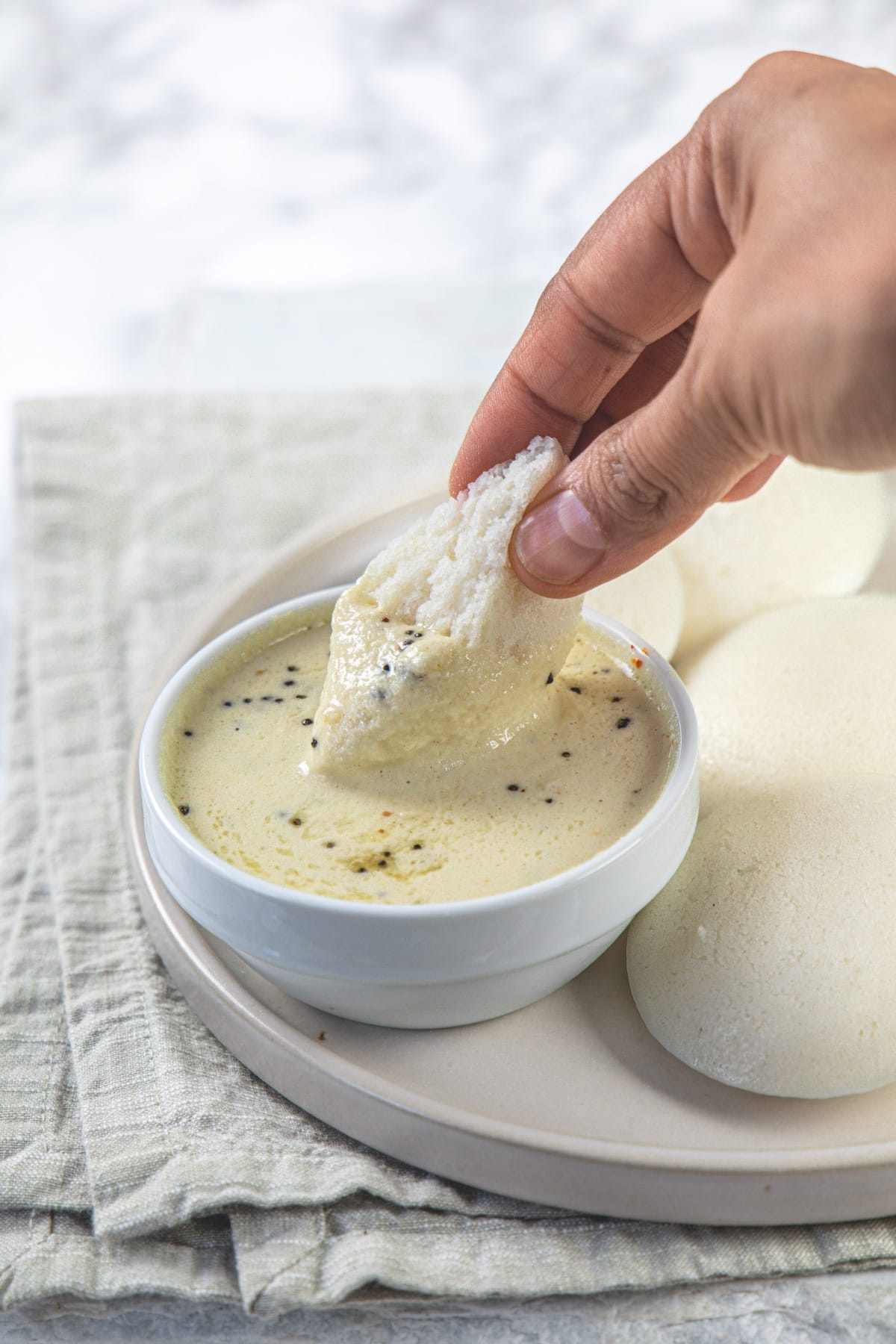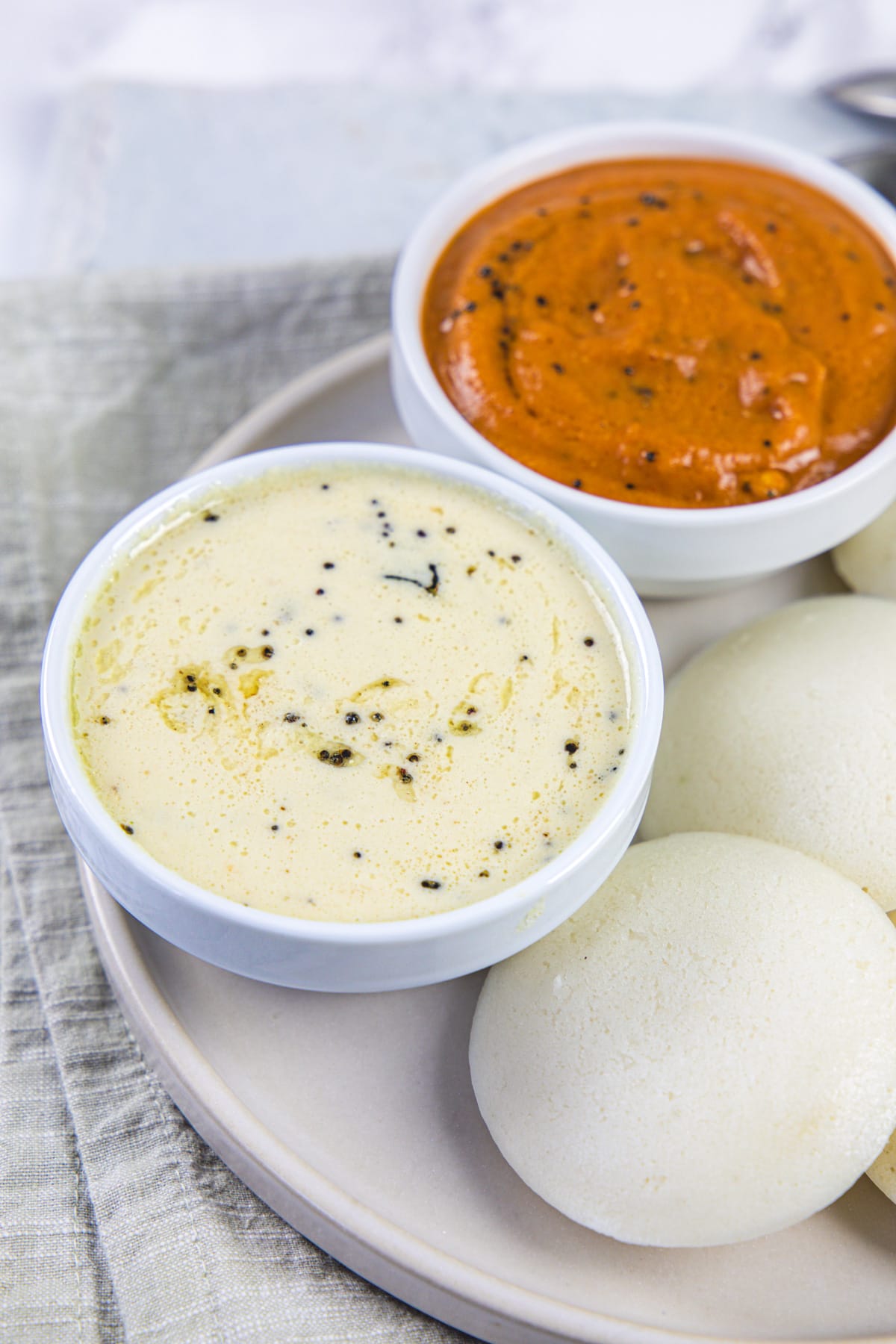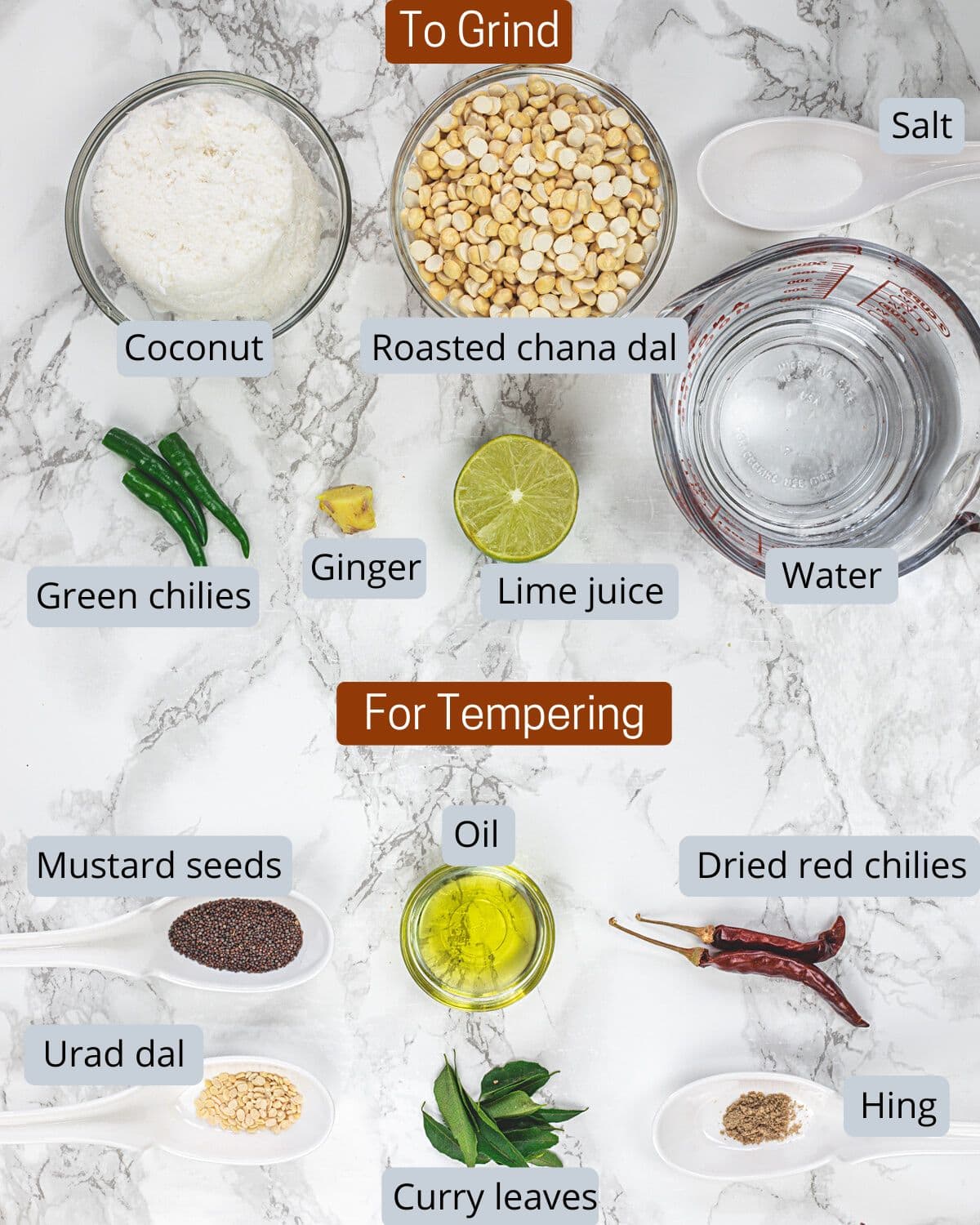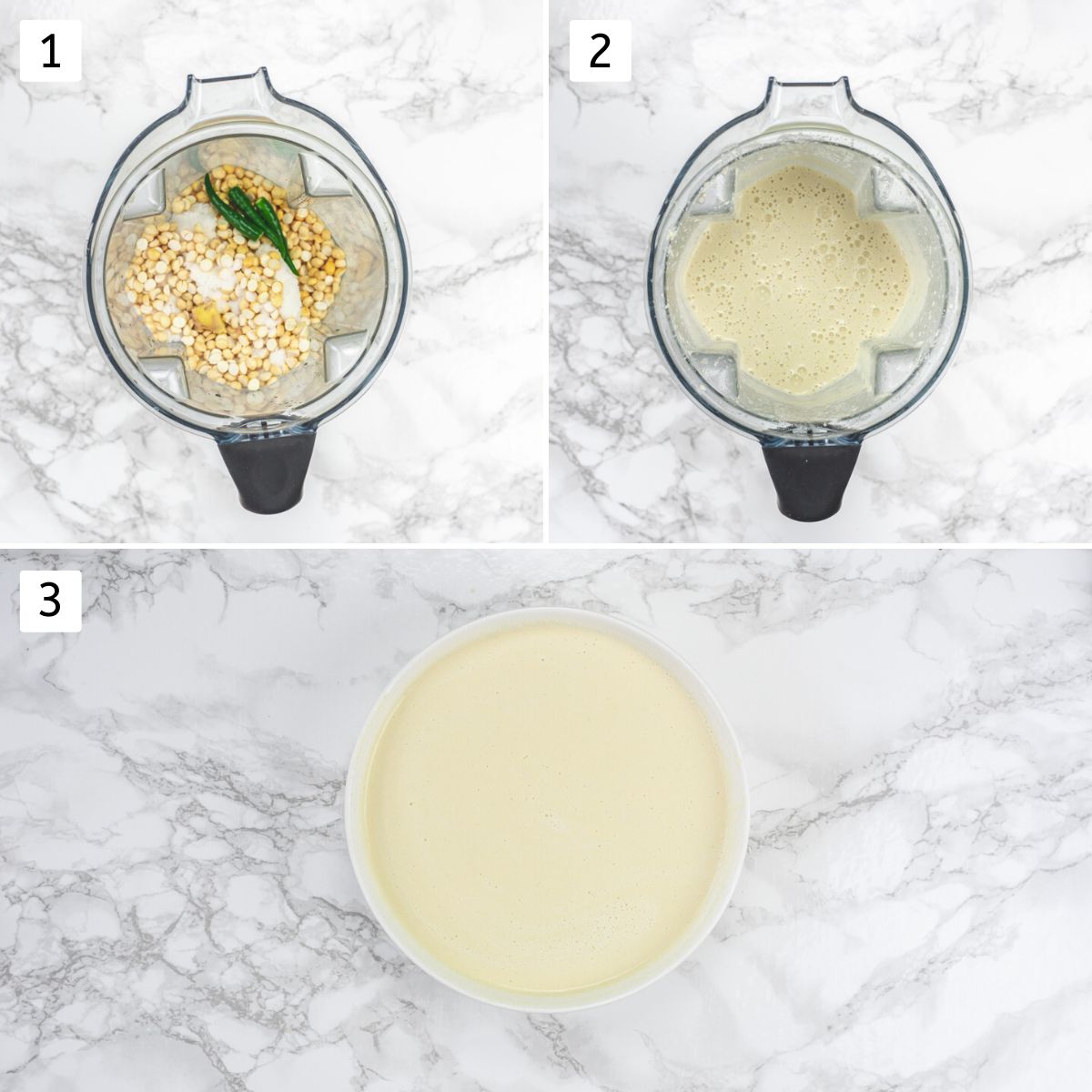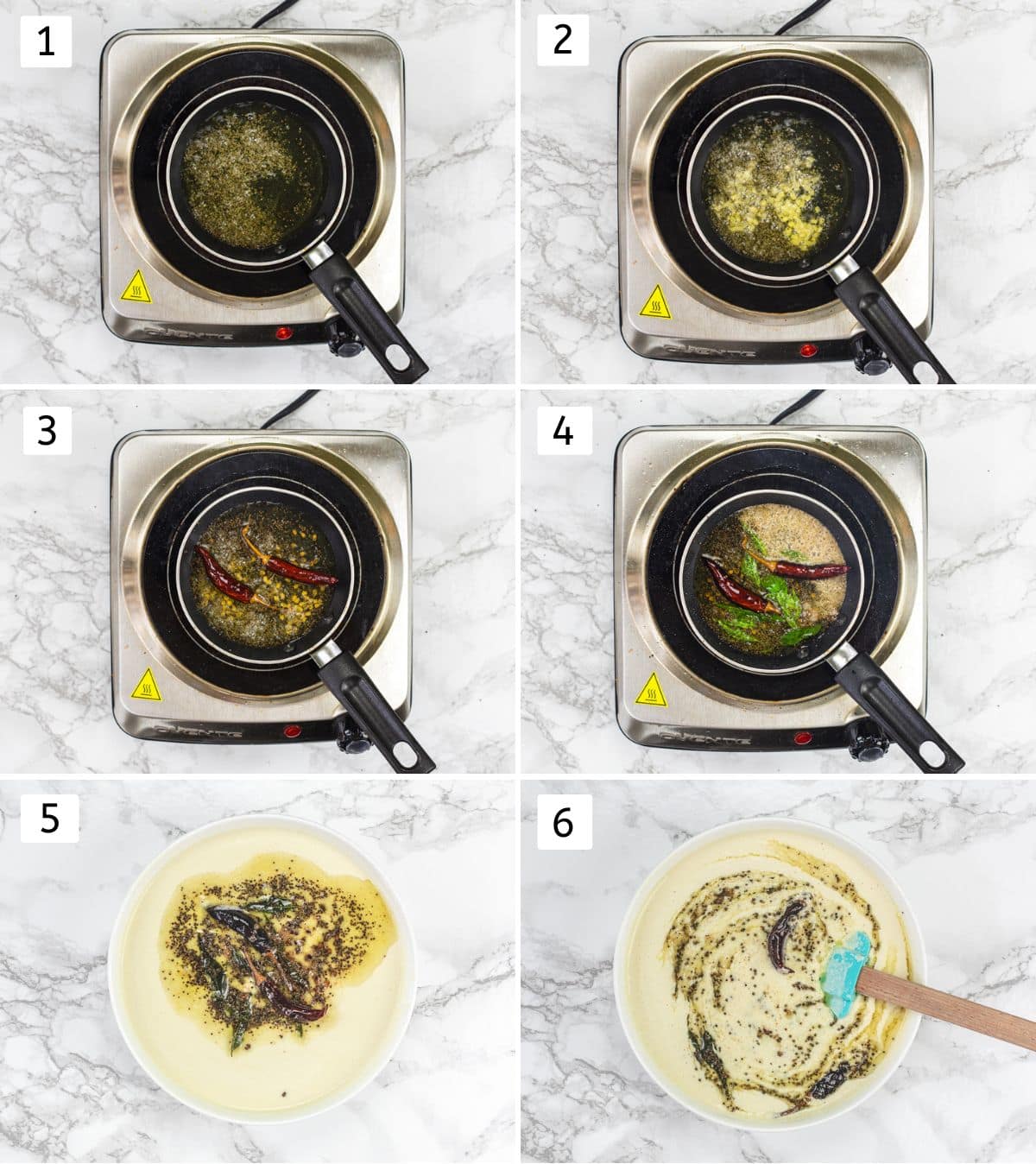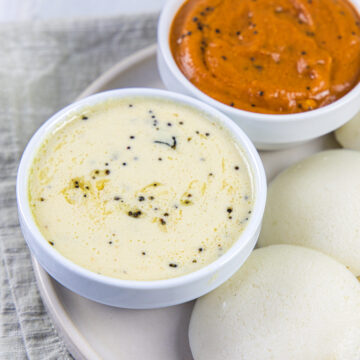Coconut chutney is a classic South Indian condiment that is served as a side with many snacks, breakfasts, or meals. It is made by grinding fresh coconut, roasted chana dal, ginger, green chili, and lime juice with a tempering of mustard seeds, urad dal, dried chilies, hing, and curry leaves. It is also known as nariyal chutney (Nariyal is the Hindi term for coconut) or thengai chutney in the Tamil language.
❤️ You’ll Love This Coconut Chutney Recipe
Restaurant-style: When you go to any South Indian restaurant, a side of coconut chutney along with a few more verities is a must for dishes like idli, dosa, uttapam, and vada. My recipe makes the exact same as your favorite South Indian restaurant (homemade is even better than some restaurants.)
Green coconut chutney Red coconut chutney Mint coconut chutney
Taste: Full of fresh coconut flavor with a unique aroma and flavor from curry leaves. Texture: Smooth, thick yet flowy consistency. Some prefer dry and super thick texture but this hotel-style chutney has dippable consistency.
Easy to make: 2 simple steps (grinding and tempering) and you’ll have it ready. Quick to make: It takes hardly 10 minutes to make it. Simple ingredients: All the ingredients are easy-to-find and basic pantry staples for Indian kitchens. Freezer friendly: Most of the time, I make a big batch and save some for later. I freeze them in individual silicone molds and defrost them as needed.
🧾 Ingredient Notes
Here is a pic of the ingredients you’ll need to make this best coconut chutney recipe. To Grind:
Coconut: Traditionally this is made with freshly grated coconut as coconut grows in abundance in the Southern part of India. But here in the USA, I always use frozen coconut (thawed). I have good experience with Deep and Daily Delight brands of grated coconut. Roasted chana dal (Dalia or Fried gram): This is an important ingredient to get the right thick texture. It absorbs the water, brings everything together, and makes the chutney flowy consistency. In the absence of this, coconut and water stay separated and the texture doesn’t seem right. Ginger: It adds flavor. Green chilies: It adds a spicy taste and heat to the chutney. Adjust the amount as per your liking spice level. Lime juice: It adds a slight tang to the chutney and it pairs well with the sweet flavor of coconut. Many prefer to use tamarind paste instead of lime. Water: (not in the pic) You’ll need water to make chutney dippable and flowy consistency.
For Tempering:
Mustard seeds: I have used tiny-sized mustard seeds that I used regularly in my Gujarati cooking. But in South India, they use bigger-sized mustard seeds. Urad dal: It is a split, skinless black gram. It is a staple for South Indian tempering (tadka). Dried red chilies: If your chilies have dirt on them then wipe them using a wet paper towel or napkin before using. Curry leaves: It is a must for a nice aroma and flavor. Hing: If you’re Gluten-free then skip adding hing or use natural pure hing without any additives.
👩🍳 How To Make Coconut Chutney? (Pics)
- First, add water to the grinder or blender jar. Then add thawed coconut, roasted chana dal, ginger, green chilies, salt, and lime juice.
- Grind into a smooth yet runny paste.
- Remove it to a bowl.
- For tempering, heat the oil in a small tadka pan. Once hot add mustard seeds and let them splutter.
- Add urad dal and dry until lightly golden. 3, 4) Add dried red chilies, then add hing and curry leaves and turn off the stove. 5, 6) Right away add this tempering to the chutney. Stir and it is ready to serve.
💭 Expert Tips For BEST Coconut Chutney
Consistency: Adjust the water amount as per your liking thick or thin chutney. If you follow the given measurement then you’ll get perfect dippable consistency.
Lime juice: You can use seedless tamarind or ready-made tamarind paste or yogurt for a tangy flavor. Roasted chana dal: You can use peanuts or cashews. Fresh coconut: You can use dry, unsweetened desiccated coconut or flakes. However, the flavor is slightly compromised.
Fry urad dal on medium heat oil (for tempering) to get crunchy yet cooked dal. If fried on low heat then urad dal will get rock hard.
For spicy chutney, use small thai chilies as shown in the pic. For medium spicy, use Indian green chilies or serrano pepper. For mild taste, discard the seeds and veins of the green chilies and use the chili portion only.
To make home-style version, use only ¼ cup of roasted chana dal (dalia).
🥣 Storage Instructions
In the refrigerator, it stays good for 3-4 days in an airtight container. Do stir and mix before serving as the chutney may separate and water settles at the bottom. In the freezer, it stays good for up to 3 months. I use silicone mold to freeze chutney, once frozen transfer them to a freezer-safe ziplock bag and store them. To thaw, remove the required amount in a bowl and keep it on the counter or in the fridge until defrosted. Do not microwave to defrost as it alters the flavor. After defrosting the chutney, if it looks too thick then add a splash of water, stir, and serve.
🍽 Serving Ideas For Coconut Chutney
This coconut chutney goes well with idli, dosa, uttapam, medu vada, paniyaram, etc. It pairs well with sambar-rice, ven pongal, upma, rava khichdi, etc. It also goes well as a side with your meal that consists of poori, paratha and curry, sabzi.
Did you try this hotel-style coconut chutney recipe? I’d love to hear about it! Leave a review in the comment section below.
Peanut chutney Tomato chutney Curry leaves chutney
